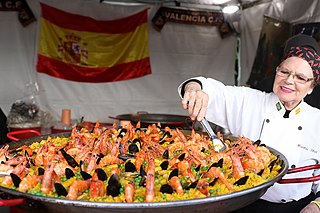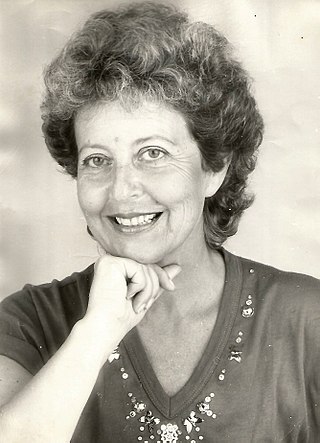
Pedro Álvares Cabral was a Portuguese nobleman, military commander, navigator and explorer regarded as the European discoverer of Brazil. He was the first human in history to ever be in 4 continents, uniting all of them in his famous voyage of 1500, where he also conducted the first substantial exploration of the northeast coast of South America and claimed it for Portugal. While details of Cabral's early life remain unclear, it is known that he came from a minor noble family and received a good education. He was appointed to head an expedition to India in 1500, following Vasco da Gama's newly-opened route around Africa. The undertaking had the aim of returning with valuable spices and of establishing trade relations in India—bypassing the monopoly on the spice trade then in the hands of Arab, Turkish and Italian merchants. Although the previous expedition of Vasco da Gama to India, on its sea route, had recorded signs of land west of the southern Atlantic Ocean, Cabral led the first known expedition to have touched four continents: Europe, Africa, America, and Asia.

The bandeirantes were slavers, explorers, adventurers, and fortune hunters in early Colonial Brazil. They are largely responsible for Brazil's great expansion westward, far beyond the Tordesillas Line of 1494, by which Pope Alexander VI divided the new continent into a western, Castilian section, and an eastern, Portuguese section.

The São Paulo Art Biennial was founded in 1951 and has been held every two years since. It is the second oldest art biennial in the world after the Venice Biennale, which serves as its role model.

Spanish Brazilians are Brazilians of full or partial Spanish ancestry.

Carlos Eduardo dos Santos Galvão Bueno, known as Galvão Bueno, is a Brazilian personality and play-by-play announcer, where he hosted Brazil national football team matches, key Brazilian football championship matches, top sporting events and Formula One races.

Emiliano Augusto Cavalcanti de Albuquerque Melo, known as Di Cavalcanti, was a Brazilian painter who sought to produce a form of Brazilian art free of any noticeable European influences. His wife was the painter Noêmia Mourão, who would be an inspiration in his works in the later 1930s.

Abraham Palatnik was a Brazilian abstract artist and inventor whose innovations include kinechromatic art.
Jorge Glusberg was an Argentine author, publisher, curator, professor, and conceptual artist.
Olavo Egídio Setúbal was a Brazilian industrialist, banker and politician. He was Mayor of São Paulo from 1975 to 1979, Minister of External Relations from 1985 to 1986, and chairman of the Itaúsa conglomerate from 2001 until his death in 2008.

Jerzy Onuch is a contemporary artist and curator. He has been working as an artist since the late 1970s, presenting performance and installation works in Europe and North America. From 2005 to 2010, he held the diplomatic post of Director of the Polish Institute in Kyiv, Ukraine. Between 2010 and 2014 he was the director of the Polish Cultural Institute in New York.

In 2015 and 2016, a series of protests in Brazil denounced corruption and the government of President Dilma Rousseff, triggered by revelations that numerous politicians allegedly accepted bribes connected to contracts at state-owned energy company Petrobras between 2003 and 2010 and connected to the Workers' Party, while Rousseff chaired the company's board of directors. The first protests on 15 March 2015 numbered between one and nearly three million protesters against the scandal and the country's poor economic situation. In response, the government introduced anti-corruption legislation. A second day of major protesting occurred 12 April, with turnout, according to GloboNews, ranging from 696,000 to 1,500,000. On 16 August, protests took place in 200 cities in all 26 states of Brazil. Following allegations that Rousseff's predecessor, Luiz Inácio Lula da Silva, participated in money laundering and a prosecutor ordered his arrest, record numbers of Brazilians protested against the Rousseff government on 13 March 2016, with nearly 7 million citizens demonstrating.

Vitor Frezarin Bueno is a Brazilian professional footballer who plays as an attacking midfielder for Athletico Paranaense.

Willys de Castro was a Brazilian visual artist, poet, graphic designer, industrial designer, stage designer and magazine editor. De Castro is best known for his "Active object" series and is considered to be a pioneer and founding contributor of the Neo-Concrete Movement.
Hermelindo Fiaminghi was a Brazilian painter, designer, graphic designer, lithographer, professor, and art critic, known for his geometric works and exploration of color.

Mila Zeiger, a businesswoman in fashion, contributed to the introduction of prêt-à-porter in Brazil. In the 1950s, she founded with her husband, David Zeiger, and her parents, David and Rachel Liberman, the women's sportswear company, Pullsport, where she developed collections based on European and North American design trends for three decades beginning in the 1950s.
Samuel Wallace MacDowell III was a Brazilian military man, magistrate, politician, journalist and a leading voice in the abolitionist movement of Brazil.

Alice Brill was a German-born Brazilian photographer, painter, and art critic.
Sheila Maureen Bisilliat is an English-born Brazilian photographer.
Leon Feffer (1902–1999) was a Brazilian businessman who founded Suzano Papel e Celulose.

Mário Xavier de Andrade Pedrosa was a Brazilian art and literary critic, journalist and political activist.























